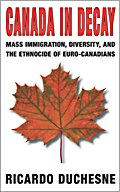West Van school turns away local kids
International students fill spots while local students forced to travel 10 kilometres for schooling
Janet Steffenhagen
Vancouver Sun
Thursday, September 18, 2008
WEST VANCOUVER – West Vancouver secondary has enrolled 172 fee-paying international students this year but has told two B.C. teens who moved into the neighbourhood with their dad over the summer it has no room for them.
As a result, they must travel 10 km to attend another public school, Rockridge secondary.
Their father, Don Brett, wants to know why international students seem to receive better treatment than locals.
“School districts need to give priority in all ways to catchment-area students; that is, B.C. residents,” he said.
The district's superintendent said schools strive to accommodate neighbourhood students, but this year was more difficult than usual. “It's the first year in my memory that we haven't been able to get every student in-catchment in and that has caught us a bit by surprise,” Geoff Jopson said.
Enrolments are up again this year, with fewer families than usual leaving the district over the summer and more moving in. That's due in part to the district's strong academic reputation, Jopson said, adding that many schools are filled to capacity.
But efforts have begun to find room for students who are on waiting lists for their neighbourhood schools, he said.
Brett missed the March 1 registration deadline because he was living and working in Whistler. He took a new job in Vancouver in mid-summer and began looking for housing immediately, with proximity to a good school as a priority. After finding a place near West Vancouver secondary, he tried to register his children but was told there was no space. The next closest school, Sentinel, was also full, but Rockridge had room.
“I said 'Rockridge?' If I wanted my kids to go to Rockridge, I'd rent a place in Rockridge,” Brett said.
When he found out the other schools had many international students, he asked why they couldn't be relocated instead of displacing neighbourhood students. The answer from a staff member was startling, Brett said. “He said, 'We couldn't run a successful business that way.' I was a bit taken aback that running a successful business was a higher priority than dealing with catchment-area students.”
Although the law allows schools to turn away students when they reach capacity, Brett said he doesn't think it was intended that B.C. students could be refused when schools had an abundance of international students.
West Vancouver has one of the most successful international student programs in the country, given its small size. It has 6,933 public school students, with almost one-tenth – 622 – from offshore. Their fees form 18-19 per cent of the annual budget.
Over-all, Brett said he supports the program, but it shouldn't place local students at a disadvantage.
“A school district is a taxpayer-funded organization with a mandate to educate residents of B.C. The international student program is an ancillary business that provides some benefits but it should not provide benefits at the expense of B.C. residents,” he said in an interview Wednesday.
Jopson agreed local students should be a priority but said it's not easy to substitute one student for another. They all have different needs and timetables, and homestay arrangements are in place.
jsteffenhagen@vancouversun.com




